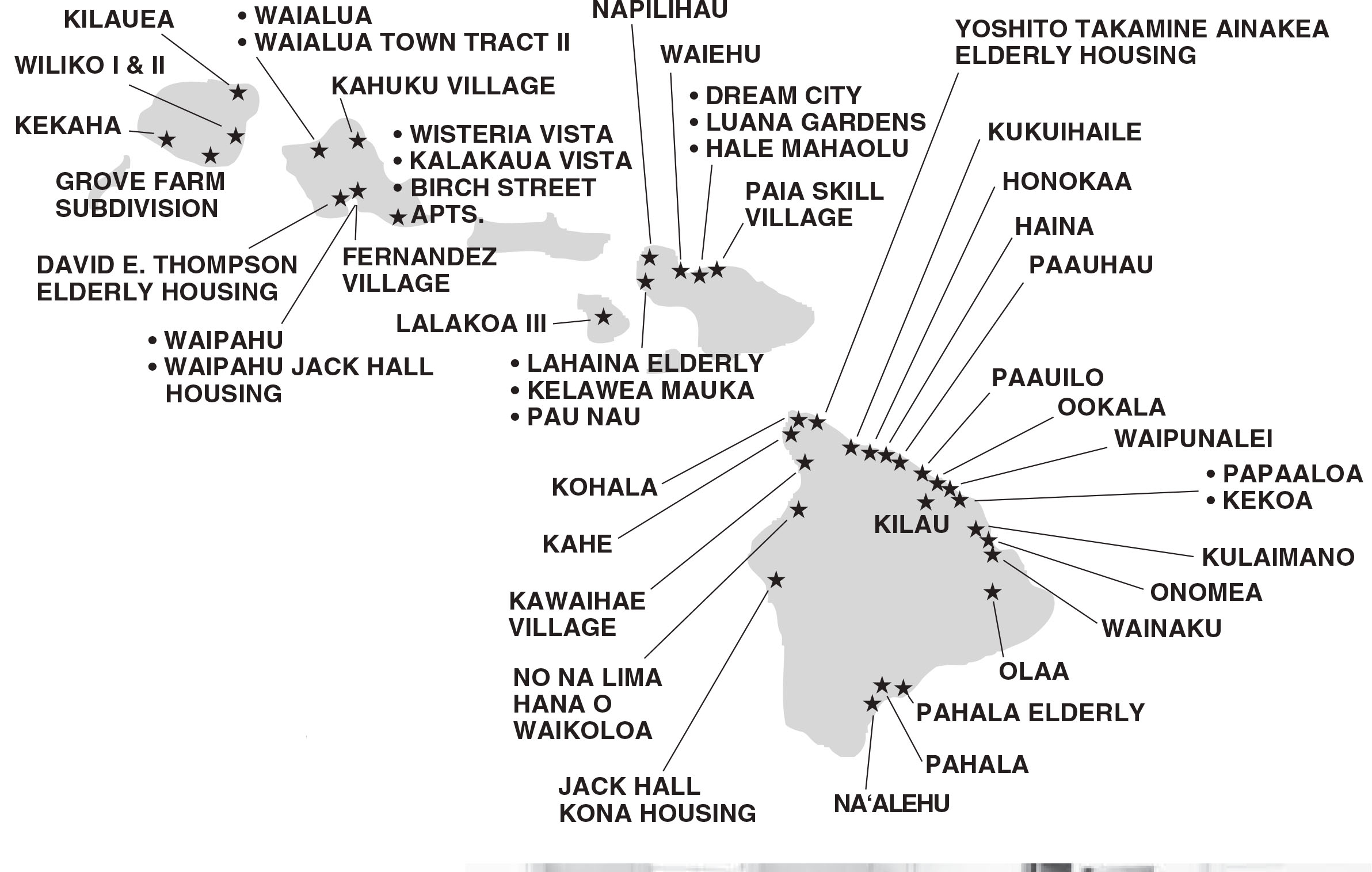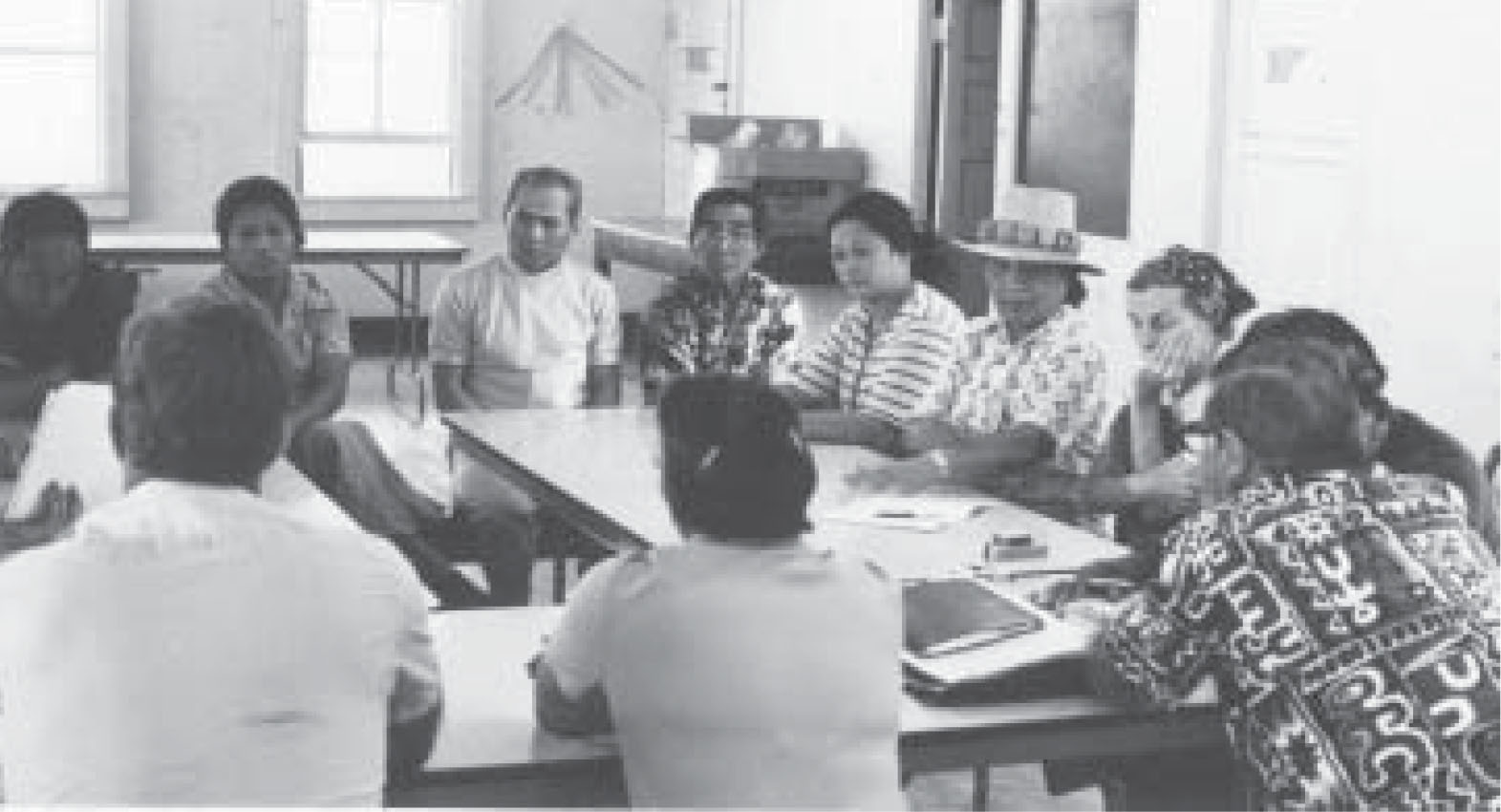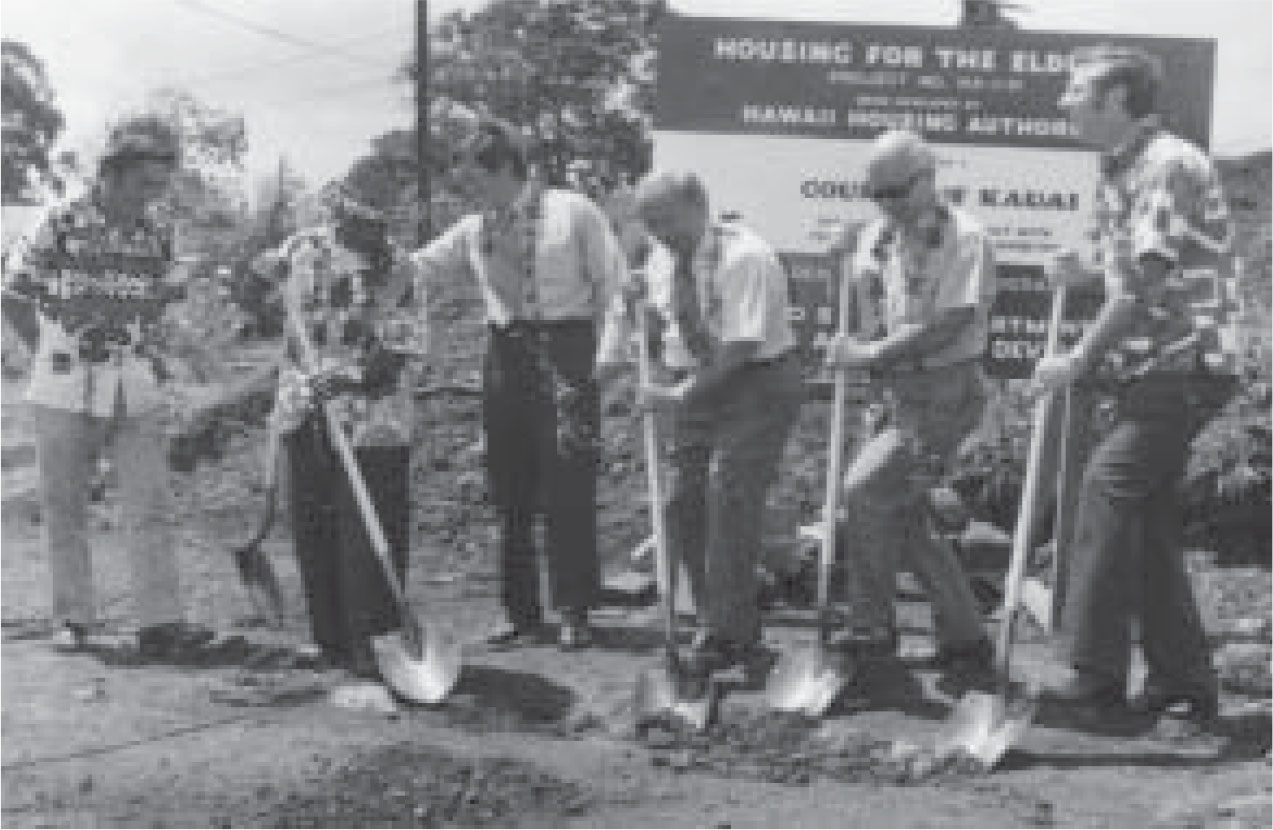A history of helping union members and communities
The ILWU Local 142 has a long history in the movement for safe, decent, and affordable housing. The Union has not been a financier or developer, but we have been an advocate for our members, other working families, and the elderly.

The ILWU took up housing concerns as early as the 1946 sugar and pineapple industry contracts — making sure that
rents were kept low, repairs were made, and housing was fairly allocated. As employers began to phase out the camps to avoid the responsibility and cost of main- taining the plantation houses, the Union stayed involved.
When companies started to sell or tear down some of the planta- tion housing, ILWU members were given preference to buy their homes or to move in to new subdivisions built on former agricultural land. In Dream City on Maui, Kulaimano on the Big Island, Wiliko on Kauai, Waialua Town Trac II on Oahu — and countless other communities — the ILWU negotiated for land and homes for our members at the best possible prices, found financing and helped people qualify for loans, sought government approvals and funds, and got future residents involved in selecting the best materials and designs.
For many years, the Union has also worked with nonprofit housing corporations such as the Hawaii Council for Housing
Action (HCHA) which helped develop the Hale Mahaolu elderly housing on Maui and the Banyan Tree project in Waimanalo. The ILWU’s Jack Hall was the first president of HCHA.
Currently, the Union’s main housing activity is centered around six projects developed, owned, and operated by nonprofit
corporations initiated by the ILWU:
- Jack Hall Kona Housing. 12 three-bedroom, 24 two-bed- room and 12 one-bedroom units. Jack Hall housing is
also a center for community activities such as Neighborhood Watch in Kealakehe. Completed in 1979 by Jack
Hall Kona Memorial Housing Corporation Waipahu Jack Hall Housing. 44 two-bedroom and 100 one-bedroom units with landscaped grounds and two
community buildings on 6.5 acres. Completed in 1980 by Waipahu Jack Hall Memorial Housing Corporation.
Early plantation housing conditions. Takeshi Ishibara shows the “honey box” outdoor plantation toilet.
- No Na Lima Hana O Waikoloa (Waikoloa Gardens). 16 two-bedroom and 8 one-bedroom units in South Kohala. Completed in 980by the Jack Hall Kona Memorial Housing Corporation.
Yoshito Takamine Ainakea Elderly Housing. 21 one-bedroom units with a community building in Kapaau. Completed in 1990 by Kohala Union Housing Corporation.

The Molokai Housing Committee meets (May 1976).
David E. Thompson Village. 88 one-bedroom units for the elderly with a park and social center on 5 acres in Ewa.Completed in 1992 by Ewa Housing FoundationPahala Elderly Housing. 8 one-bedroom senior citizen housing units with a community room. Built in 1996 by the
Ka‘u Housing Corporation.
Ground-breaking at the Kilauea Elderly Housing project on Kauai.
